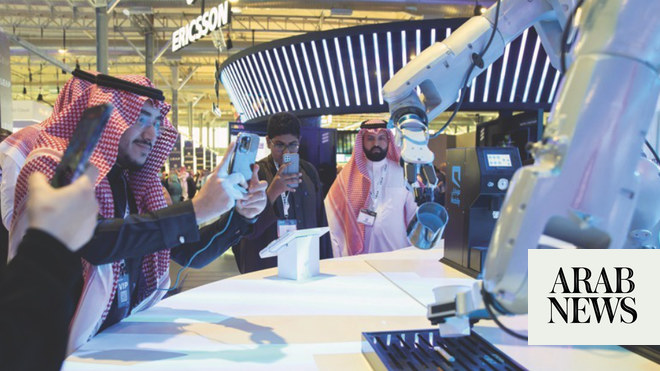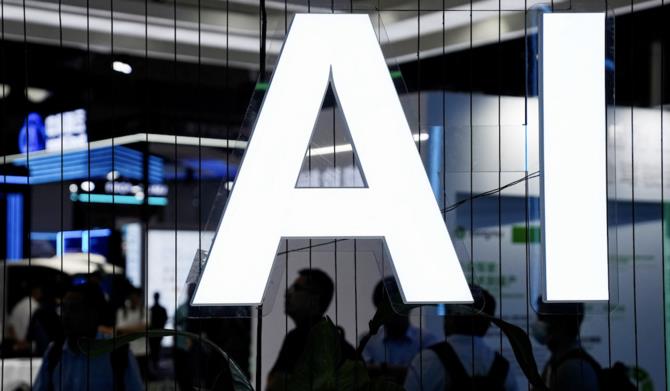
A world away from the battlefields of the Middle East, wars of a very different kind are raging among corporations, fund managers, research centers and tech startups. Although these rivalries do not involve soldiers and fighters prepared to make the ultimate sacrifice, the stakes are actually even higher for the dueling sides. One may call it the race for artificial intelligence supremacy, the AI tech race or simply the AI race.
It is estimated that the tech giants that have got a foot in the door will need to spend trillions of dollars, not mere billions, to keep developing and improving their AI-powered web tools before they start to reap the rewards of their investments. A lot of the money is being spent by these companies on salaries and bonuses, with the aim of attracting the brightest engineers in the industry, aggressively poaching specialists from rivals and retaining talent.
What this amounts to, in the medium to long term, is a daunting challenge for tech companies, academic institutes and engineering departments whose business does not involve AI. For them, this division of the market is a zero-sum game: more resources shifting toward AI development means fewer resources, economic as well as human, available to them at a time when they are under rising pressure to come up with products and services that can generate higher revenues on lower budgets.
Unsurprisingly, young men and women, even in industrially advanced countries, are finding it increasingly difficult to land jobs unless their specialization is in AI and machine learning. Even though, as of today, non-AI tech companies are the ones generating tangible profits for investors and shareholders and driving economic growth without requiring trillions of dollars in investment.
According to a recent Wall Street Journal report, US tech companies now look for employees “who possess soft skills, collaboration abilities and a working knowledge of how the company must work on its AI strategy.” In response, some tech workers have started trying to diversify their skills “by signing up for AI boot camps or other classes.” In an ideal world, this should not be the situation, given that there are three core fields that the world will always need: information, energy, and resources or materials. Although the present time, starting in the 1970s with the introduction of the personal computer, is supposed to be the information age, all three fields are essential and foundational.
Admittedly, information, in the form of knowledge, data and communication, is central to innovation, decision-making and societal progress. It drives education, technology, governance and human interaction, making it a fundamental asset in any era. But energy is no less important. Everything in the modern world runs on energy — whether it is powering industries, homes or transportation. As societies grow and evolve, the demand for a judicious mix of conventional and alternative energy sources will remain critical for maintaining infrastructure and quality of life.
Likewise, natural resources (like water, minerals and fossil fuels) and manufactured materials (like steel, plastics and electronics) are the building blocks of physical infrastructure and all human-made products. Managing these resources sustainably is key to maintaining a functioning global economy.
These three fields, taken together, form the backbone of any advanced civilization, supporting technological advancement, economic growth and societal well-being. Yet, judged by materialistic criteria, one field is pulling rapidly ahead.
Young men and women are finding it increasingly difficult to land jobs unless their specialization is in AI.
Arnab Neil Sengupta
From the Arab world, Saudi Arabia and the UAE have made significant investments in the AI sector as part of their strategy to diversify their economies and reduce dependence on oil revenues. These financial commitments demonstrate their desire to become leaders in the AI sector and drive future economic growth through innovation.
In 2020, venture capital investments in AI hit a whopping $75 billion, up from $3 billion in 2012. In 2021, AI investments, mainly in the US and China but also including the EU, UK, Japan and India, touched $20 billion in just the second quarter. Key areas of investment included autonomous vehicles, healthcare AI, cloud computing and IT infrastructure. The consequent surge in demand for AI and data sciences is leading to an imbalance across other technology fields.
As universities and industries heavily prioritize these areas, disciplines like electrical, mechanical, chemical and civil engineering are facing a decline in interest. This shift stems from the perception that AI and data-driven careers offer higher salaries, prestige and job security, especially as automation and digital transformation reshape the workforce. This trend has resulted in a talent shortage in traditional engineering sectors, which are crucial for infrastructure, manufacturing and energy innovation.
Research funding is increasingly funneled toward AI, leaving other tech domains underfunded. Essential industries like aerospace, automotive and sustainable energy development face delays in innovation due to a shrinking pool of qualified engineers. In fact, even demand for software engineers has weakened, as employers look for those experienced in large language models, a type of AI program that can recognize and generate text and powers popular generative AI chatbots like Grok, Meta AI and ChatGPT. As for non-engineering staff in the tech industry, such as marketing, human resources and recruiters, they have even less job security these days.
The good news is that engineering companies and university departments outside AI, data sciences and machine learning can adopt a number of steps to attract students and retain staff.
First, they can emphasize the vital role their fields play in solving real-world problems, such as infrastructure development, energy sustainability and environmental protection, which offer fulfilling career paths with a tangible social impact. Highlighting research opportunities and showcasing innovations in fields like renewable energy, robotics or advanced manufacturing can help convey the message that these disciplines continue to be exciting and relevant.
Second, fostering interdisciplinary collaboration with AI and computer science departments can appeal to students’ interest in cutting-edge technology while demonstrating its application to other engineering challenges. Offering dual-degree programs, certifications or training in AI-related tools specific to their fields could enable students to gain valuable skills without leaving their core engineering discipline.
Third, companies and universities can focus on improving work-life balance, job security and professional development to counter the allure of AI’s high pay packages. Scholarships, mentorship programs and internships with industry leaders can also enhance student engagement.
By showing that engineering fields are essential to building a better world, they can attract students and researchers interested in meaningful careers beyond AI and data sciences. Looking to the future, AI and machine language’s potential for transforming industries and driving innovation is undeniable. But a disproportionate focus on just one field of technology detracts from the diverse expertise needed to tackle global challenges, ranging from climate change to urban infrastructure. A more balanced approach is crucial to ensuring that the technological ecosystem remains vibrant and diverse, both at the global and local levels.
Arnab Neil Sengupta is a senior editor at Arab News. X: @arnabnsg












